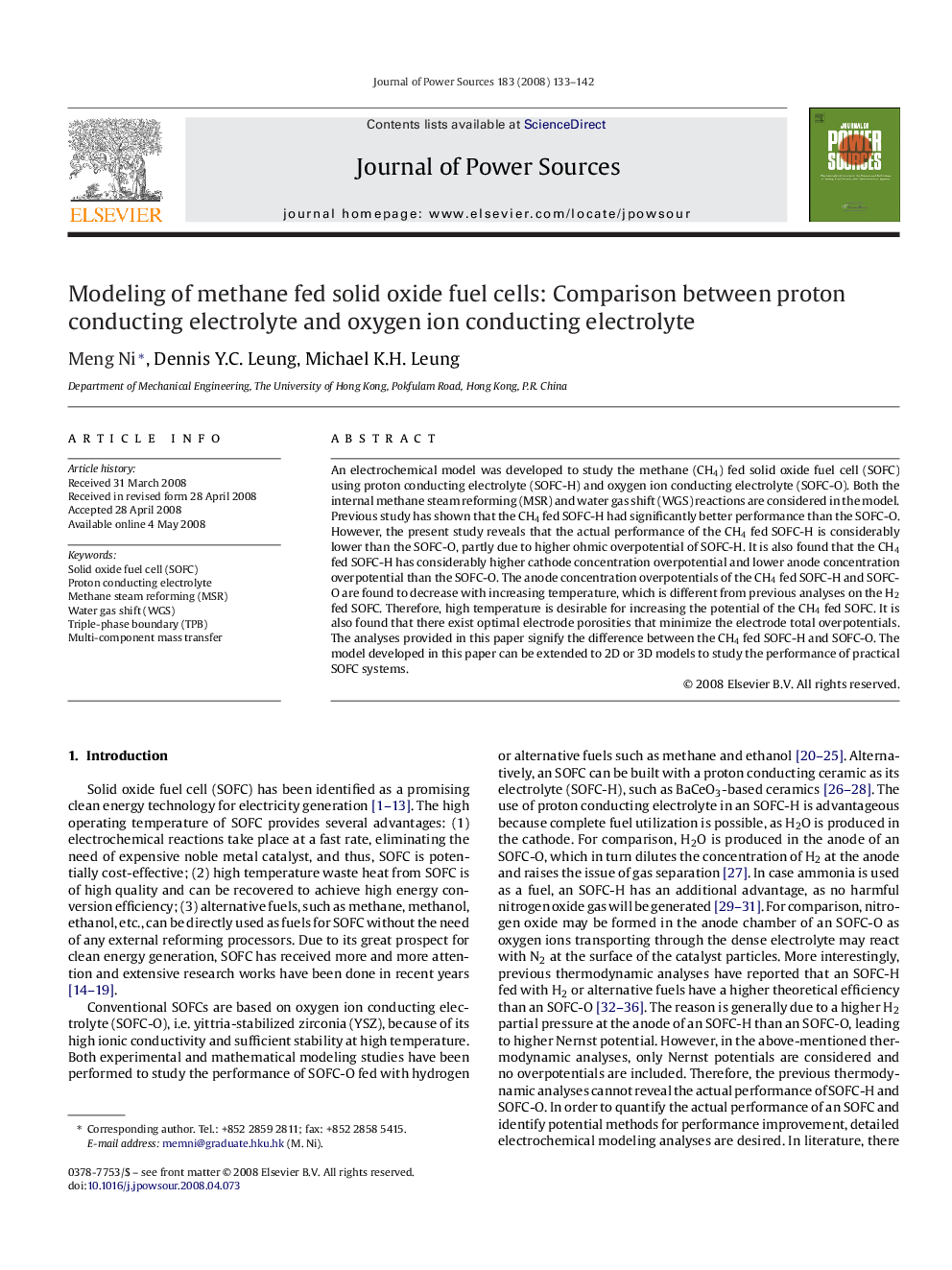| Article ID | Journal | Published Year | Pages | File Type |
|---|---|---|---|---|
| 1285391 | Journal of Power Sources | 2008 | 10 Pages |
An electrochemical model was developed to study the methane (CH4) fed solid oxide fuel cell (SOFC) using proton conducting electrolyte (SOFC-H) and oxygen ion conducting electrolyte (SOFC-O). Both the internal methane steam reforming (MSR) and water gas shift (WGS) reactions are considered in the model. Previous study has shown that the CH4 fed SOFC-H had significantly better performance than the SOFC-O. However, the present study reveals that the actual performance of the CH4 fed SOFC-H is considerably lower than the SOFC-O, partly due to higher ohmic overpotential of SOFC-H. It is also found that the CH4 fed SOFC-H has considerably higher cathode concentration overpotential and lower anode concentration overpotential than the SOFC-O. The anode concentration overpotentials of the CH4 fed SOFC-H and SOFC-O are found to decrease with increasing temperature, which is different from previous analyses on the H2 fed SOFC. Therefore, high temperature is desirable for increasing the potential of the CH4 fed SOFC. It is also found that there exist optimal electrode porosities that minimize the electrode total overpotentials. The analyses provided in this paper signify the difference between the CH4 fed SOFC-H and SOFC-O. The model developed in this paper can be extended to 2D or 3D models to study the performance of practical SOFC systems.
